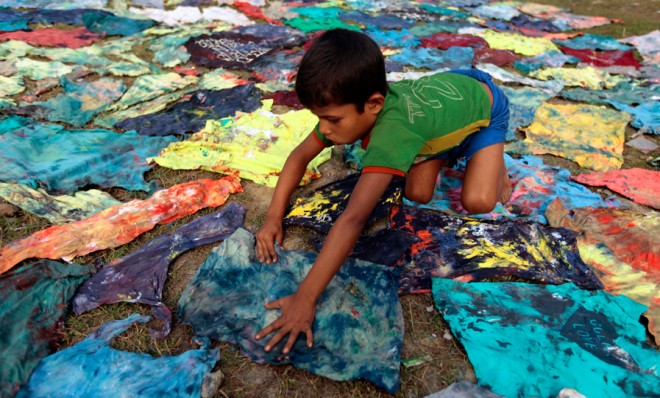What the decline of child labor means for workplace rights
The staggering success of the anti-child labor movement could galvanize other causes in the retail industry


The use of child labor has declined by one third over the past decade, according to a new report from the United Nations' International Labour Organization.
Child labor worldwide fell by 78 million from 2000-2012, to an estimated 168 million such workers in 2012. Driving that trend, the report said, was a "sustained global movement against child labor," accompanied by forceful governmental action to end the practice.
The marked decline could offer something of a roadmap for critics of other controversial practices used to churn out cheap retail goods for the markets in industrialized countries.
The Week
Escape your echo chamber. Get the facts behind the news, plus analysis from multiple perspectives.

Sign up for The Week's Free Newsletters
From our morning news briefing to a weekly Good News Newsletter, get the best of The Week delivered directly to your inbox.
From our morning news briefing to a weekly Good News Newsletter, get the best of The Week delivered directly to your inbox.
The use of child labor went largely unchecked until the 1990s, when major retailers began to push back against the practice. Yet that pushback came largely as the result of intense media scrutiny and a public campaign to shame companies that allowed their products to be made with child labor.
Almost two decades ago, Nike became the face of corporate child labor following some bruising articles highlighting the company's business practices. In particular, a 1996 Life magazine article about 12-year-old Pakistani children stitching soccer balls prompted the company to publicly apologize and vow to do better in the future.
"The Nike product has become synonymous with slave wages, forced overtime, and arbitrary abuse," Nike co-founder Phil Knight said in 1998, while adding that the company would crack down on its foreign contractors to ensure they used "practices which the conscientious, good companies will follow in the 21st century."
A similar campaign — backed by governments, companies, and activists — is now underway to improve the safety conditions of overseas factory workers. A number of high-profile factory accidents this year — most prominently the collapse of the Rana Plaza garment factory in Bangladesh that killed more than 1,100 people — have helped launch that effort.
A free daily email with the biggest news stories of the day – and the best features from TheWeek.com
In June, President Obama announced he would suspend Bangladesh's trade privileges, and would only reinstate them once Bangladesh took a number of steps, like implementing more thorough building inspections. Though largely symbolic, the move was viewed as a stern warning that unsafe labor practices would no longer be tolerated.
On the business side, some seventy retailers have signed the Accord on Fire and Building Safety in Bangladesh, which requires them to inspect contracted factories for safety violations. In the wake of the Rana Plaza collapse, other businesses, led by Gap, joined together under the Alliance for Bangladesh Worker Safety to develop and finance new factory standards within five years.
And as was the case with the anti-child labor movement in recent decades, the effort to improve working conditions is getting a boost from non-governmental activists. For one, the group Better Factories Cambodia rolled out a new campaign this month to spotlight unsafe working conditions in hopes of pressuring companies to demand better practices from their contractors.
There is also evidence that good old-fashioned economic growth helped reduce child labor, a factor that could eventually lead to better working conditions as well.
The decline in child labor has coincided with strong economic expansion in emerging markets, where the practice is most widespread. In Vietnam, child labor declined by 30 percent from 1993 to 1997 during a time of robust economic growth, according to one study.
There's reason to believe a similar phenomenon could play out for factory workers, too.
As Adam Davidson chronicled in the New York Times Magazine, developing nations tend to go through a "T-shirt phase" in which they produce cheap clothing in subpar working conditions before moving on to more complicated products that require a skilled work force. Bangladesh, he noted, is in the T-shirt phase right now. But given the growing backlash over factory conditions, and with few other countries ready to absorb the industry should it seek to move to a new home with lax regulations, working conditions as a whole could be primed for a big improvement.
Bangladesh might be where this centuries-long T-shirt journey ends, which means that their race to the bottom may be rooted in a misunderstanding. The country's manufacturers can afford to take a step or two up the value chain. Not only can they pay their workers more, treat them better, and house them in safe and clean factories, but there is also a significant economic incentive to do so. [New York Times]
Jon Terbush is an associate editor at TheWeek.com covering politics, sports, and other things he finds interesting. He has previously written for Talking Points Memo, Raw Story, and Business Insider.



